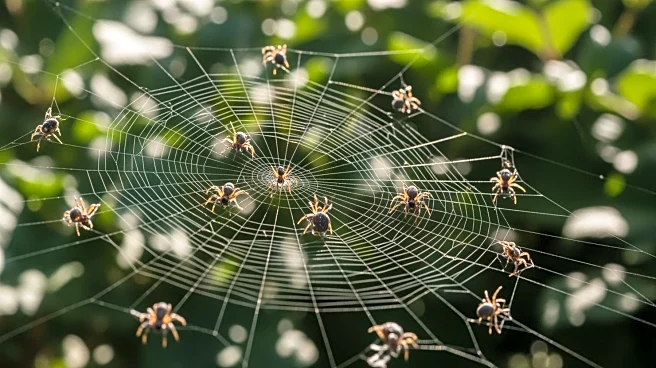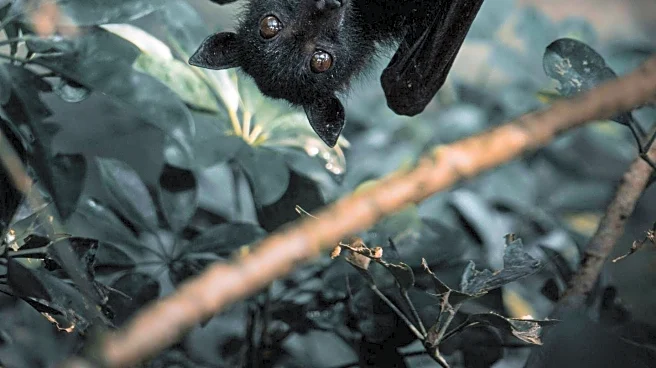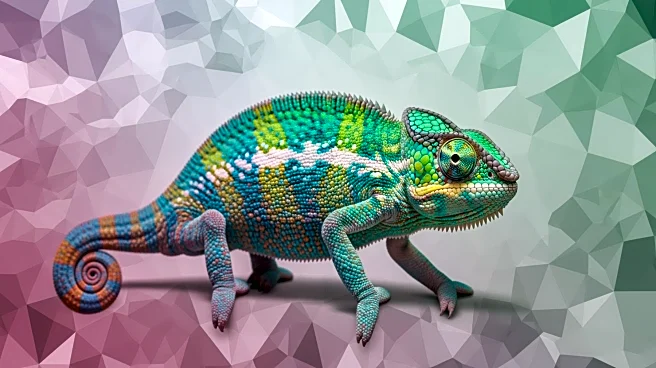What's Happening?
Researchers have observed two species of orb-weaving spiders from the genus Cyclosa, found in the rainforests of the Philippines and Peru, creating larger 'decoy' models of themselves to protect against predators. These spiders construct decorations resembling
larger spiders using silk and natural materials like prey carcasses and leaves. The decoys, sometimes up to ten times larger than the spiders themselves, are placed at the center of the web and are shaken to mimic movement, deterring predators. This behavior marks the first recorded instance of creatures creating 'scarecrow' versions to escape predation.
Why It's Important?
The discovery of Cyclosa spiders creating decoy models is significant as it provides insight into the complex evolutionary strategies developed by species to survive predation. This behavior highlights the intricate adaptations in the animal kingdom, contributing to the understanding of ecological interactions and evolutionary biology. The findings could influence future research on predator-prey dynamics and the development of visual defense mechanisms in other species. Understanding these strategies may also have implications for biodiversity conservation efforts, particularly in rainforest ecosystems.
What's Next?
Future experimental studies are anticipated to further explore the protective function of these decoys. Researchers aim to compare survival rates of spiders with varying decoy sizes and web decorations to test their effectiveness against predators. These studies could provide deeper insights into the evolutionary pressures that led to the development of such complex visual defenses. The ongoing research may also uncover additional survival strategies employed by Cyclosa spiders and other species, enhancing the scientific understanding of adaptation and evolution.













